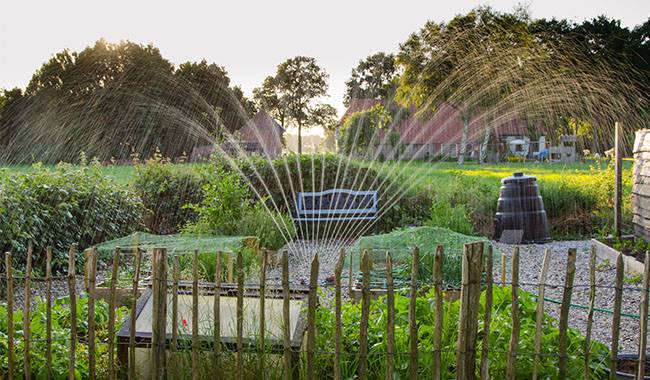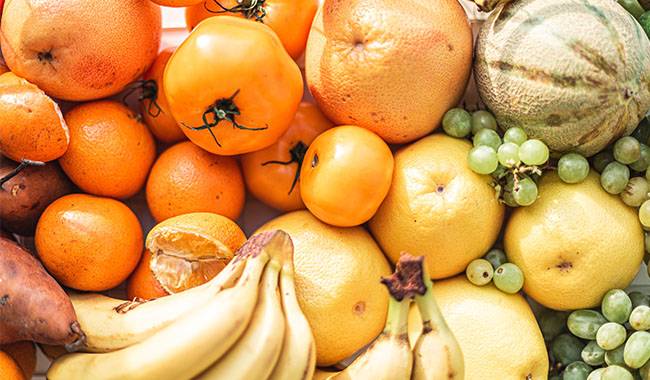
Today, many different techniques are used for the preservation of agricultural products. In industry, they include treatment with low doses of radiation, coating the surface of fruits with special oil components, vacuum packaging, freezing, harvest, and different types of processing using various chemical preservatives ……
In the old days, when chemical preservatives were not so well known, people used natural substances that hinder microbial activity and cause food spoilage.
These were the most readily available local substances – peat, gypsum, charcoal, sand, lime, well water, wheat bran, and even maple leaves. In this article, I will show you how to use natural methods for the long-term preservation of crops.
Peat
In most cases, the modern gardener uses peat on his plot just to improve the soil – as a natural fertilizer, loosener, mulch. But not so long ago, this wonderful natural material was used as an excellent preservative to provide long-term preservation for fruits and vegetables.
Previously, root crops such as carrots, potatoes, and turnips were covered with peat. During such storage, the vegetables not only did not sprout but also did not wrinkle, keeping the original appearance of the commodity completely.
This is because peat is elastic, has antiseptic properties – inhibits the development of rotting bacteria, absorbs and retains moisture well, has a strong ability to absorb gases, has a low thermal conductivity, is well permeable, and has high acidity.
Even after nine months, root crops “wrapped” in peat residue look like they have crawled out of bed.
The best choice for storing produce is considered to be peat with a decomposition level of less than 15%, including at least 10% sphagnum moss. Its moisture content index is within 35-45%, ash content is below 15%, and acidity is within 2.5-5.4.
And it is better not to subject the peat to the process of self-healing before use, because peat can become self-heated when stored in large piles.
In addition to potatoes and carrots, tomatoes, beets, apples, pears, onions, flower tubers, and even herbs can be stored in peat. For this purpose, a peat mat about 2inch (5 cm) thick should be laid on the bottom of the box, which will store the fruit without deformation and inhibit the development of decay fungi.
Next – lay a layer of vegetables or fruits so that they do not touch each other. All this should be interspersed with peat shavings. This creates a 1.2-2inch (3-5 cm) thick layer on top of the fruit layer. Then – repeat everything again.
It is worth noting that the product wrapped in peat is not only perfectly fine for long-distance transport, but also well tolerates a little frost, allowing you to transport it in winter without losses.
In addition, with this type of storage, even if some of the fruit rots and deteriorates, it cannot spread to neighboring fruits, so that a significant portion of the vegetables or fruits deteriorate and can only be stored nearby. Depending on the type of preserved vegetables or fruits, the product loss can be reduced by 1.5-2.5 times.
After used peat is used as a preservative, it can be used as a soil conditioner because it does not lose its properties.
Peat moss
Another excellent natural preservative is sphagnum moss. We don’t use it much in our homes today. But our ancestors collected moss on the bogs, dried it, and poured it on root crops.
At a temperature of 37°F (3°C) in the cellar, the vegetables were stored in the moss until spring, with no loss of flavor or appearance. After the storage season, the moss is dried and reused.
The preservative properties of sphagnum moss are based on its fungicidal and antifungal properties. It is also an excellent water-absorbent, not only absorbing water well but also retaining it.
It is also a substance that creates an acidic environment and stops the life activity of a large number of microorganisms, including those responsible for the decay of living organisms.
Due to these characteristics, not only root crops (beets, potatoes, carrots), but also onions, apples, bulbs, and flowers are stored in moss.
Interestingly, you can store not only dried and prepared vegetables in moss but also freshly dug up vegetables (slightly dried) washed with water – the result of storage is the same.
Moss is able to absorb water at a volume 20 times greater than its own mass while allowing air to pass through.
Charcoal
You are probably aware of the antiseptic effect of charcoal. Especially for those of us who propagate plants. It is the charcoal that we use to powder the cuttings and tubers so that they do not rot.
Even sprinkle the charcoal powder on top of the drainage layer of the pot to prevent rotting of the roots when there is too much water. Throw a piece of charcoal into the water with cut flowers in it to make them stand a little longer.
But in addition to its fungicidal properties, charcoal is also very absorbent. Together, these two properties make it a pretty good preservative. That’s why just two centuries ago, people used charcoal to preserve apples.
Apples were picked, inverted in a crate, and powdered with pounded charcoal. Then they were tightly covered with a lid and stored in the cellar. There, at a temperature of 41-48°F (5-9°C), they are stored until spring.
Charcoal has many useful properties, one of which is that it cleans tooth enamel so well that it was once added to tooth powder.

Grapevine vines
Not everyone knows this, but the smoke also has antiseptic properties. Because of this, ritual fumigation took place among some peoples and is still practiced by some of them today.
However, in this process, as it was proved by scientists long ago, smoke does not drive away from the “evil spirits” of disease, but disinfects the space – cleans the air and surfaces of pathogens and decaying bacteria.
Knowing these properties, our ancestors used smoke from smoked vines to store the harvest of apples. The fruits were placed on a mat in the drying chamber so that they did not touch each other, a few vines were lit and smoked for 7-8 days. Afterward, the apples were placed in boxes containing straw.
Lime
Lime is another natural preservative. Our ancestors used it to store potatoes. Simply cover the root crop with dry powder and it will not rot within a year.
Also, lime does not corrode the skin and does not penetrate into the root tissue. Remove the potatoes from it just by wiping its surface and they are ready to go to the kitchen.
About the properties of slaked lime, known since ancient times, for this purpose, and used to cover walls. It purifies the air, destroys pathogenic microorganisms, and absorbs carbon dioxide.
Paper
That for storing apples used washi paper, many of us remember that since he was a child, my mother asked me to help “wrap” each apple to make it last longer.
Paper is especially useful if the apples need to be sent somewhere or transported. In such cases, the apples were not only wrapped in a soft sheet of paper but also covered with straw that had been threshed several times beforehand by a threshing machine (for softening).
They are stacked in crates or baskets with holes in the sides. Or wrapped in paper soaked in an alcoholic solution of salicylic acid. In this case, they are preserved for a longer time.
The plums are also wrapped in the paper if you want to mail them. A paper-cut mat is placed at the bottom of the box, and the wrapped fruit is placed tightly on top.
Plaster
Plaster can also be used to store the apple harvest. To do this, carefully pick the apples, dry them, and stack them with their tails up, arranging them in such a way that they do not touch each other.
Powder the plaster and place it in the bottom of the box and pour it over the fruit. The boxes are then placed in a cool, dry place at a temperature of 41-48°F (5-9°C), placing them on stands so that they do not touch the ground.
Another way our ancestors stored their harvest with the help of plaster was to store the fruits in pottery, stuffed with plaster plugs.
Sand
Many of us use sand to store carrots, but in the old days, it was also used to store cucumbers. Cucumbers were packed in earthenware pots, covered with sand, covered tightly, and buried in the ground in a cool place or taken to the basement.
Well water
Well, water or spring water is also used to raise cucumbers. One end of the cucumber is dipped in a container and placed in a cool place with regular water changes. If the crop area is large, the well will have a platform 12-16inch (30-40 cm) above the water surface on which the cucumbers are placed.
Birch twigs
It may seem strange, but in less ancient times, birch branches were one of the ways to store cabbage. At first, cabbage was chopped, fermented, and birch twigs were inserted into sauerkraut. This greatly extended its shelf life.
Maple and corn leaves
Maple leaves are used to extend the storage period of plums. We put them in a sieve. A layer of leaves is placed at the bottom, plums on top, and a layer of maple leaves.
But corn leaves are used to store grapes. They put the grapes in boxes, cover them with corn leaves, and seal the boxes so that the grapes are not exposed to the air.
Wheat bran
Wheat bran was also used to store grapes. The bran was placed in a layer at the bottom of the barrel, then the grape clusters, then – a layer of bran, then – clusters …… Another layer of bran was placed on top. And a bucket was sealed.







